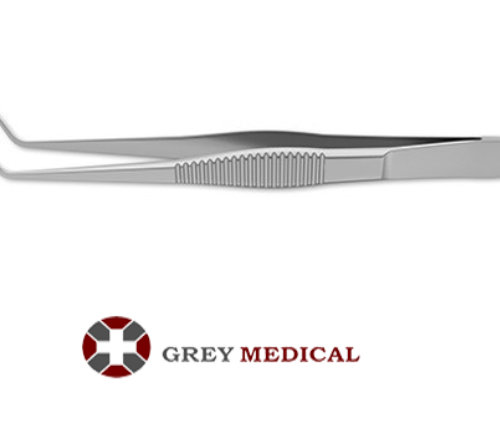Surgical instruments are the backbone of any medical procedure, and ophthalmology is no exception. Among the many tools used in eye surgeries, ophthalmic forceps stand out as a key ophthalmic forceps instrument, valued for their precision and versatility. From enabling delicate adjustments during surgery to securely handling fragile tissues, these tools are vital in delivering successful outcomes in ophthalmic procedures.
What Are Ophthalmic Forceps?
Ophthalmic forceps are specialised surgical instruments designed specifically for procedures involving the eye and its delicate structures. At their core, they are precision tools that allow surgeons to hold, manipulate, or remove tissues and objects with exceptional accuracy. Crafted from high-grade stainless steel or titanium, these instruments are designed to withstand the sterilisation processes required to maintain surgical hygiene while offering long-term durability.
One of the most distinctive features of ophthalmic forceps is their fine, carefully calibrated tips. These tips are designed to minimise damage to sensitive tissues, a critical factor given the fragility of ocular structures. Their ergonomic design ensures that surgeons can maintain steady control during operations, which is essential when working within the confined and intricate space of the eye.
The wide variety of pean forceps available – each suited to a specific surgical requirement – further underscores their importance. From basic tissue manipulation to micro-level interventions, ophthalmic forceps are essential for achieving precision in countless procedures.
Types of Ophthalmic Forceps and Their Uses
Ophthalmic forceps come in many forms, tailored to meet the demands of various surgical techniques. Forceps can be broadly categorised based on their intended use, such as tissue handling, suturing, or foreign body removal.
For instance, locking forceps are invaluable during surgeries where consistency and precision are vital over longer periods. These instruments possess a locking mechanism that keeps their grip secure, minimising strain on the surgeon’s hand. Conversely, non-locking forceps offer greater flexibility for quick, intermittent actions, such as positioning sutures or adjusting delicate tissues.
Tissue forceps, like Colibri forceps, are widely used in corneal surgeries, thanks to their lightweight design and finely serrated tips. Conversely, utility forceps, like iris or lens forceps, prove indispensable in cataract surgeries or when handling intraocular lenses (IOLs). Each type has been meticulously engineered to enhance the surgeon’s control and facilitate handling of specific tissues or surgical materials with utmost care.
The most advanced ophthalmic forceps often integrate cutting-edge features, such as anti-reflective coatings and ergonomic grips. These innovations reduce visual distractions from surgical lights and improve overall handling, ensuring that procedures can be performed with remarkable precision even in high-stress environments.
The Role of Ophthalmic Forceps in Eye Surgery
Given the intricate nature of eye surgery, precision is paramount. Ophthalmic forceps allow surgeons to handle the minute structures of the eye without causing trauma to the surrounding tissue. Their role extends across virtually every type of ophthalmic procedure, from minor interventions to complex reconstructive surgeries.
Cataract surgery, one of the most common ophthalmic procedures, is a prime example of how indispensable these instruments are. During this procedure, fine-tipped forceps are used to position and secure intraocular lenses or to delicately adjust the capsule. Similarly, in retinal surgeries, specialised micro-forceps play a critical role in removing scar tissue, handling membranes, or positioning retinal implants with millimetre-level accuracy.
Additionally, ophthalmic forceps are pivotal in corneal surgeries, such as keratoplasty. Surgeons rely on these tools to manage delicate grafts or sutures with unparalleled precision. These procedures often require stable yet flexible instrumentation, and ophthalmic forceps rise to the occasion by offering unparalleled control.
Whether assisting in traditional surgical approaches or supporting cutting-edge robotic techniques, ophthalmic forceps have cemented their place as a non-negotiable component of the ophthalmologist’s toolkit.
Maintaining Quality and Safety Standards
The critical function of ophthalmic forceps underscores the importance of maintaining stringent quality and hygiene standards. These tools must be meticulously cleaned, sterilised, and inspected regularly to ensure they remain free from contaminants or deformities that could compromise their performance. Even the slightest imperfection can have severe consequences given the delicate nature of the procedures they are used for.
Advancements in materials and manufacturing techniques have further enhanced the reliability of forceps. Titanium-based forceps, for instance, are lightweight, corrosion-resistant, and biocompatible – making them a preferred choice for many surgeons. These developments reflect the broader strides being made in surgical instruments aimed at improving patient safety and surgical outcomes.
Why Ophthalmic Forceps Are Indispensable
The field of ophthalmology demands extraordinary precision, and without tools like ophthalmic forceps, such precision would be unachievable. They enable surgeons to perform procedures with a level of control that would be impossible with less specialised instruments. Their role in advancing both the scope and safety of modern eye surgery cannot be overstated.
These instruments also provide significant benefits beyond the operating theatre. By minimising damage to surrounding tissue and improving the accuracy of interventions, ophthalmic forceps contribute to faster recovery times and enhanced patient outcomes. The ongoing development of these tools – from the introduction of innovative materials to state-of-the-art designs – continues to push the boundaries of what’s possible in ophthalmic surgery.
The Takeaway
Ophthalmic forceps are more than just surgical instruments – they are precision tools that enable surgeons to transform vision and improve lives. From cataract removals to retinal repairs, their versatility and precision have made them an irreplaceable part of ophthalmic procedures. With advancements in design and technology, these forceps continue to improve surgical outcomes, enhancing both precision and patient care. For surgeons and manufacturers alike, the commitment to maintaining the highest standards ensures that ophthalmic forceps remain at the forefront of medical innovation.





Comments